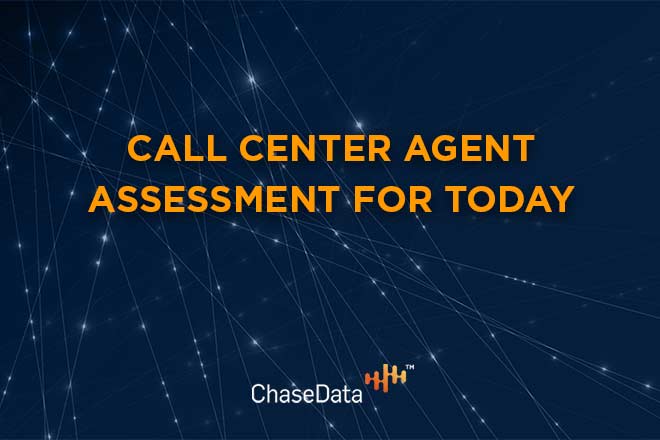February, 17 2020 3:29 pm

What makes a great call center agent? The problem with answering that question is that the correct reply might vary from center to center - and it will also be dramatically different than the answer might have been just a decade ago. It definitely makes call center agent assessment difficult!
Here, we will take a look at some of the qualities that create an excellent agent. Use these as a guideline to form your own method of evaluating your employees. Call center agent assessment doesn’t have to be difficult; just follow these recommendations and give your agents the kind of feedback they need to thrive!
Metrics are the way to go when it comes to evaluating your agents, but not just any metrics will do the trick. It is important to evaluate your employees using metrics that actually matter and actually impact how well they are doing their jobs.
This list is comprised of the most highly-recommended metrics for tracking and evaluating agent performance. Use it as your guide to creating your own call center agent assessment plan:
Check out these detailed descriptions of these all-important metrics:
This metric measures several things at once, which is why it is so important for you to track and measure when evaluating your agents.
First, the average time in queues can measure agent productivity. Your agents should be moving between calls quickly. This will allow them to serve the highest number of consumers at the fastest rate. After all, time is money in the call center setting!
This metric can also measure how quickly consumers are being served and how long they are being asked to wait. This is important in improving your customer service approach since customers really don’t like waiting. A happy consumer is one who is quickly and correctly served!
You are likely aware of the importance of ASA, but if not, you are missing out on a major element of quickly and properly serving your customers. How quickly are your agents answering calls? A matter of mere seconds can mean the difference in satisfied and frustrated customers, the latter of which will lead to a climbing call abandonment rate. Prevent that problem by training agents to answer calls quickly and using technology that helps make connections happen quicker.
An agent’s occupancy rate measures how much of their overall on-the-clock time they are spending actively engaged in calls and how well they are using that time. Those are important elements in agent success, which is exactly why you need to be tracking and analyzing this metric.
A low occupancy rate means an agent is wasting their time. This doesn’t always mean that your agents are playing games on their desktop or chatting with coworkers instead of engaging with consumers. Many agents don’t realize they are wasting time until their metrics reflect it. If your agents are experiencing low occupancy rates, help them correct this by training them to make better use of their time.
Your call center agents can’t be their best and provide the kind of top-notch customer service your consumers expect if they aren’t on the phone line long enough to do so. One way to ensure that they are is to monitor individual agents’ call abandonment rates. This metric measures the percentage of consumers who hang up or have their call disconnected before being served.
It can be difficult to glean much important information from an individual call abandonment rate, but the overall rates in your center can indicate major trends that are causing problems for your agents. Smaller trends or outlying individual rates that aren’t meeting expectations may just mean that small groups of agents need more training or management team guidance to improve their approach.
Average handling time is an evaluation of how much time your agents are spending engaging with consumers on average. While it does not specifically measure the success of these interactions, the length of calls can be indicative of how well your agents are doing at getting to the heart of your consumer’s concern and addressing it properly. That brings us to our next metric:
How quickly are your agents handling calls? More importantly, how quickly are they properly handling a consumer’s complaints, questions, or concerns? This is what first call resolution is all about - ensuring that callers are having their “why” addressed quickly and on the first call to your center. The higher this rate is, the more successful your agent is.
Customer satisfaction rates are some of the most important metrics you can measure. Choose the ones that matter most to you, whether it be Net Promoter Scores, Customer Effort Scores, or something else. Many successful centers measure a multitude of these scores to great effect. Just be sure that you’re only gathering and evaluating information that will benefit you without wasting your resources or time!
Need to improve your technology before you can conduct accurate call center agent assessment? Probably! Many of the metrics you need to keep track of are more easily tracked with today’s best call center technology. With the technology and tools available through ChaseData, your center will have everything you need to properly keep an eye on those agents and their performance. With the right software solutions in place, you can ensure that your agents are continually improving via collected and analyzed feedback - and that your company is enjoying the benefits of that improvement. For more information, give us a call today!